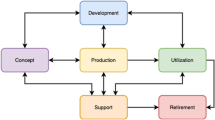Abstract
We contrast the software architecture of a hard real-time application using a fixed priority task structure against the software architecture of the same system using a cyclic executive structure to satisfy hard real-time deadlines in response to a set of embedded system requirements. We identify the perceived and actual advantages and disadvantages of both approaches, consider the types of applications which can take advantage of these approaches, and make recommendations related to the attributes of such applications that might be needed with both approaches. We conclude that the fixed priority approach, when priorities are assigned using rate monotonic priorities, generally dominates the cyclic executive approach for hard real-time systems.
Similar content being viewed by others
References
T. P.Baker and A.Shaw. 1989. The Cyclic Executive Model and Ada. Real-Time Systems: The International Journal of Time-Critical Computing Systems 1, (1):7–25.
J.P. Lehoczky and L. Sha. 1986. The Average Case Behavior of the Rate-Monotonic Scheduling Algorithm, School of Computer Science, Technical Report, Carnegie Mellon University.
J.P. Lehoczky, L. Sha, and Y. Ding. 1989. The Rate Monotonic Scheduling Algorithm-Exact Characterization and Average Case Behavior. Proceedings of the Real-Time Systems Symposium, Santa Monica, CA. USA: pp. 166–171, IEEE, December.
J.P. Lehoczky, L. Sha, and H.K. Strosnider. 1987. Enhanced Aperiodic Responsiveness in Hard Real-Time Environments. Proceedings of the Eighth Real-Time Systems Symposium, pp. 261–270, IEEE, December.
C.L.Liu and J.W.Layland. 1973. Scheduling Algorithms for Multiprogramming in A Hard-Real-Time Environment. Journal of the Association for Computing Machinery, 20(1): 46–61.
L.Sha and J.B.Goodenough. 1990. Real-Time Scheduling Theory and Ada. IEEE Computer, 23(4): 53–62, April.
L. Sha, J.P. Lehoczky, and R. Rajkumar. 1986. Solutions for Some Practical Problems in Prioritized Preemptive Scheduling. Proceedings of the Seventh Real-Time Systems Symposium, pp. 181–191, IEEE, December 1986.
L. Sha, R. Rajkumar, and J.P. Lehoczky. 1990. Priority Inheritance Protocols—An Approach to Real-Time Synchronization, IEEE Transactions on Computers, 39(9), September.
Author information
Authors and Affiliations
Rights and permissions
About this article
Cite this article
Locke, C.D. Software architecture for hard real-time applications: Cyclic executives vs. fixed priority executives. The Journal of Real-Time Systems 4, 37–53 (1992). https://doi.org/10.1007/BF00365463
Issue Date:
DOI: https://doi.org/10.1007/BF00365463




